[ad_1]
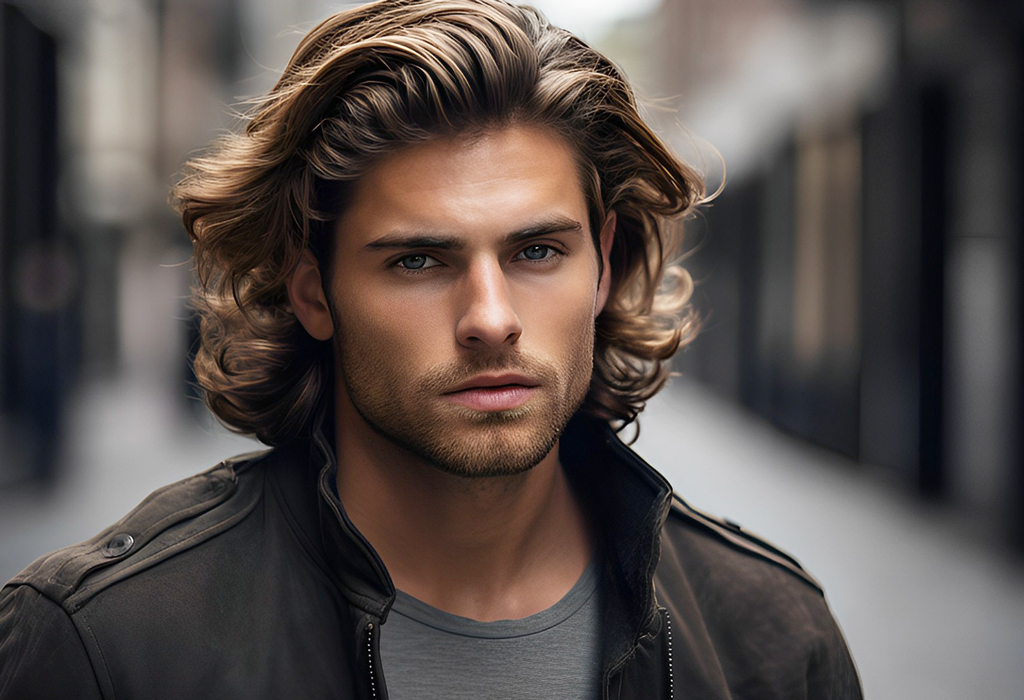
Here’s the situation: you need to pick up some shampoo for yourself, so you walk into the drugstore and see a wall of options.
Which do you pick?
You ask yourself… “what is the cheapest & what smells the best?”
Boom – Sandalwood body, hair, & face wash 3-in-1 for $5?! What a deal.
SOLD.
Simple, right? Problem solved.
Wrong.
Did you know these mass-market brands can potentially damage your hair? When it comes to picking hair care products – ingredients & formulations matter. More importantly, your hair type matters.
For years, men have been tricked into thinking that combining shampoo, conditioner, and body wash into one product gives us the best results.
Don’t fall for it.
If you shop for the cheapest products you’ll get the cheapest results. And you could end up with a long list of problems:
- Dry scalp
- Oily scalp
- Itchy scalp
- Dandruff
- Frizz
- Unmanageable hair
- Knots
- Breakage
…the list goes on and on.
At the end of this article, I’ll provide you with some reputable brands to shop for and guide you through the process of discovering what your hair needs.
Discovering Your Hair Type
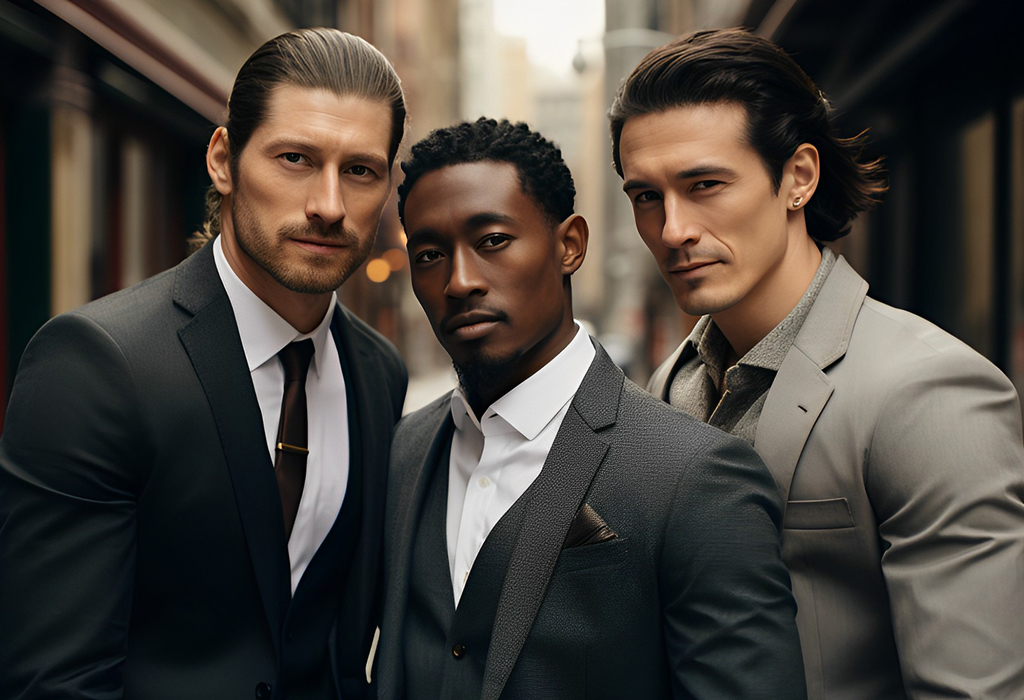
Your hair type is the road map you will use to pick the best products. Without knowing what it is, you’re shopping blind. You wouldn’t shop blind when investing in a new watch or car – so why do it when shopping for grooming products?
In this article, I will break down exactly how to find your hair type and what products you should buy.
We’ll cover:
- Who The Heck Am I?
- Why Your Hair Type Matters
- Curl Patterns Explained
- How To Discover Your Curl Pattern
- Hair Care For Each Curl Pattern
- Hair Porosity Explained
- How To Discover Your Hair Porosity
- Hair Care Tips Based On Porosity
- Hair Texture Explained
- How To Discover Your Hair Texture
- Hair Care Based On Your Texture
- Hair Density Explained
- How To Discover Your Hair Density
- Scalp Moisture Explained
- How To Discover Your Scalp Moisture Levels
- Hair Care Tips Based On Scalp Moisture
- Conclusion
- Download the Mannered Manes App
For those who don’t know me, my name is Travis White. Let me start by saying this – I’m not a cosmetologist. I’m just a guy who’s passionate about helping men with their hair & grooming.
Over the years, I’ve done tons of research for my articles & videos, and any claim I make, I back up with a reputable study.
In the past, I also worked for Real Men Real Style for three years so I’ve been trained well on how to research.
Why Your Hair Type Matters
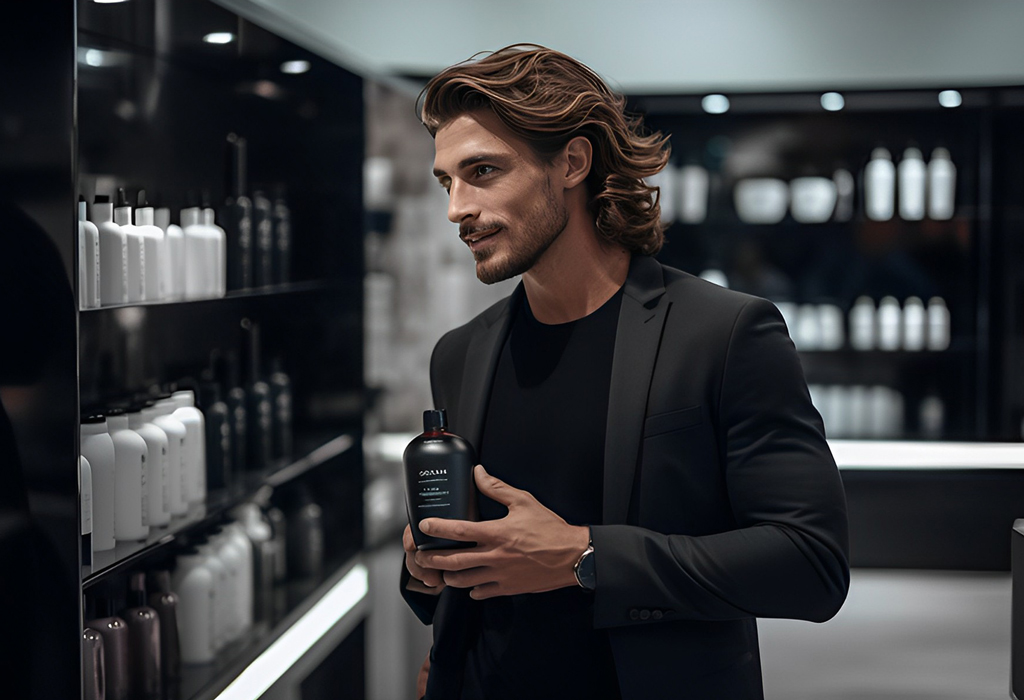
Let’s start with a simple rule:
Just because a product works for my hair, doesn’t mean it will work for yours.
Read that again.
Just because a product works for my hair, doesn’t mean it will work for yours.
Why? It’s simple – the products that are right for you relate to your unique hair type and style.
Shampoo & conditioner are NOT one size fits all. Before reading on, the first thing you need to do is shift the belief that any product you find on the shelves will give you good results. Are we on the same page? Cool…
Some common questions that follow are:
- How do I figure out my hair type?
- What products should I use?
This stuff can seem complicated. If you Google “how to find my hair type” you’ll get sucked into a never-ending rabbit hole of charts, graphs, and contradicting info.
Pro tip: don’t do that.
Let’s not kid ourselves: most of you have the same goal regardless of your hair type:
To develop hair that looks and feels healthy.
So remember this – don’t overthink it!

As you go through this article you might tell yourself you need to buy hundreds of dollars worth of products. You don’t.
Once you know your hair type, the solution might be as simple as switching your shampoo and conditioner.
You won’t believe how simple it is, and you’ll probably be relieved at how much money you will avoid wasting.
Here’s a quick shortcut for short-haired men…
If you have short hair (2 inches or less), you can jump to the texture & scalp moisture parts. Those are the most important parts you’ll need to know when choosing products.
However, if your hair is long, or you’re growing it out then you’ll want to get a good idea of each characteristic.
Let’s start with your curl pattern.
What is Curl Pattern?
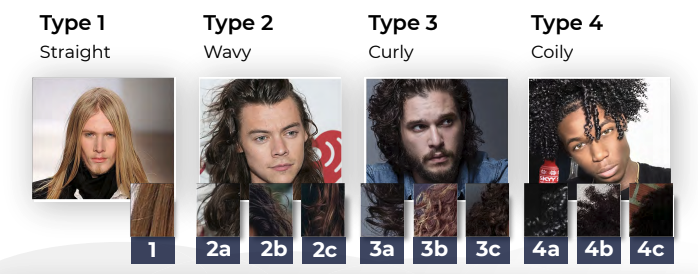
Studies show your curls are entirely determined by your genetics.
A 2017 study out of the Experimental Dermatology journal looked at a sample population of 6630 people – made up of South American, European, Native American, and African ancestry.
The conclusion: your genes are responsible for shaping hair curl and exist within your hair follicles during hair development, puberty, and the hair cycle.
In other words, a gene determines how curly or straight your hair is.
So what are the different hair curl patterns?
As you can see, there are 4 main hair types:
- straight
- wavy
- curly
- coily.
Each one is broken down into sub-categories based on how tight or loose the curls are.
Straight hair only has one category: it’s either straight or it’s not.
Then comes group 2 hair. 2a, b, and c are based on the intensity of the s-curve from loose to tight.
- 2a is a loose wave
- 2b is a bit tighter and curls from midpoint to ends
- 2c is the most well-defined s-curve.
Next, we have group 3 hair.
- 3A curls are s-shapes that form loose loops
- 3b is a bit tighter
- 3c curls are starting to become coily, you could wrap them around a straw
Finally, we have group 4.
- 4A is a tight coil that can wrap around a chopstick
- 4B starts to form a z-pattern, some refer to this as kinky
- 4c are the tightest corkscrew coils.
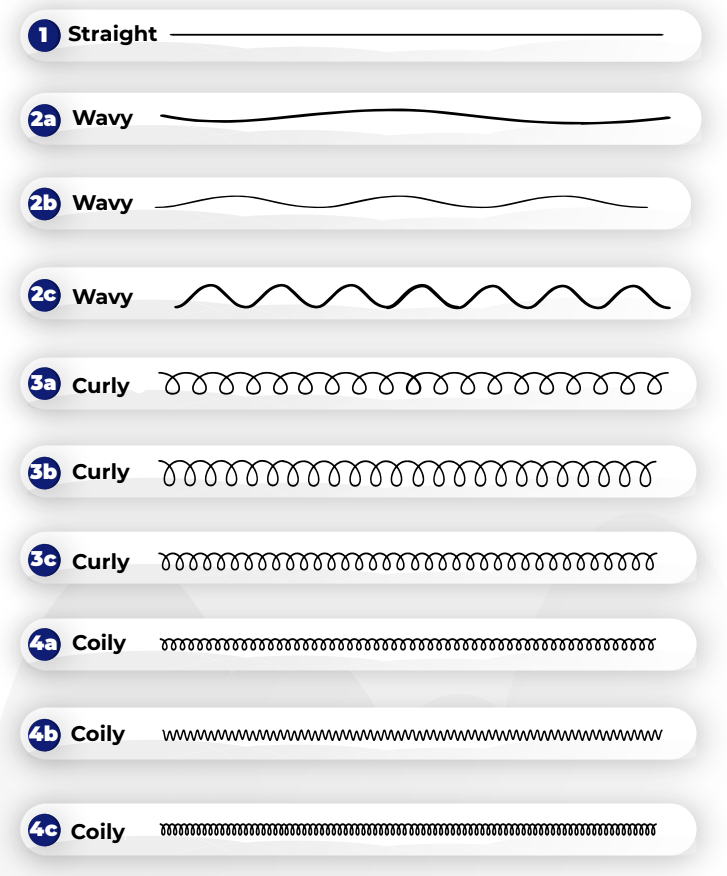
If you look at two people who fall into identical hair types, you’ll almost certainly find slight differences between them. Even within the above categories, hair type is so unique to each individual that it’s impossible to develop a system that shows every combination. What’s more, individual men can have more than one curl pattern.
My hair, for example, is actually a combination of 1 & 2a on the top and 3b on my sideburns (it’s weird).
How To Discover Your Curl Pattern
The best way to find your curl patterns is to see how your hair lies naturally after you’ve washed, conditioned, and allowed it to air dry.
Don’t use any heat tools when performing this test. Once you’ve done that, you’ll be able to see your curl pattern pretty easily.
The longer your hair is, the looser your curls may get as the weight of your hair will often (but not always) slightly straighten it out.
Congratulations, you now know your curl pattern. So what do you do with this info?
Hair Care Tips For Each Curl Pattern
Type 1: Straight Hair
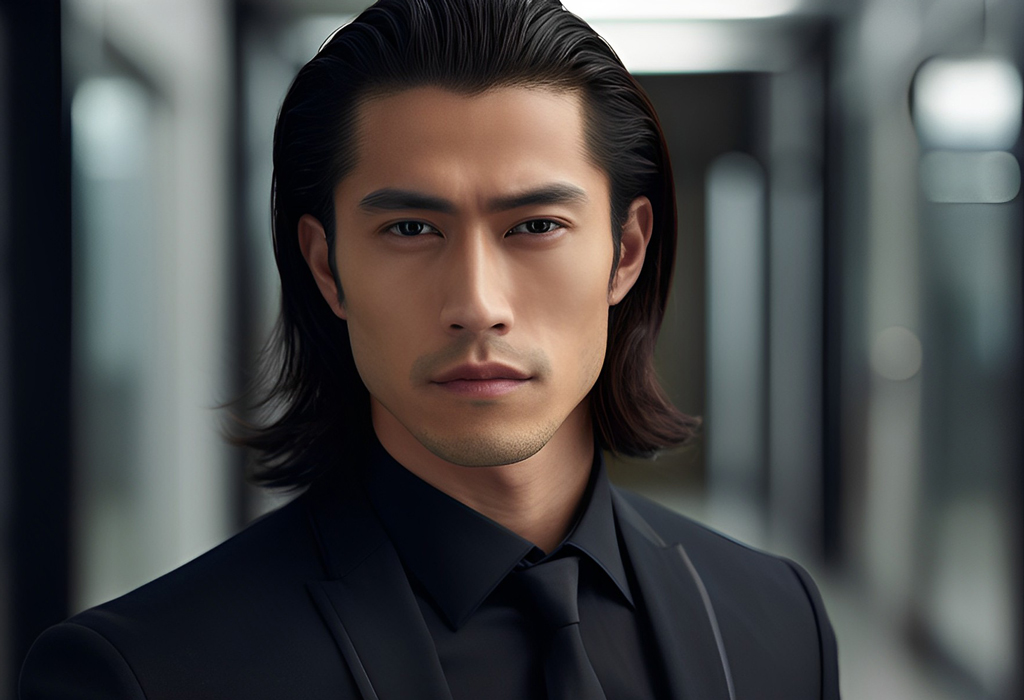
Pin-straight hair tends to get oilier than the other types because the sebum your scalp produces can move down the hair shaft easier than curly hair. As a result, guys with this hair type don’t usually need to use hair oil.
Brushing twice a day is a good idea if your hair is pin-straight. The bristles will absorb and spread your natural oils down the hair shaft, which will thin out the oil build-up and keep it from sitting up at the roots.
Avoiding this will help lengthen the time between washes and help your cuticles seal in moisture. Just make sure you brush your hair correctly!
Type 2: Wavy Hair

If your hair is wavy, you’ll want to avoid heavy creams and butter because they can weigh down your mini-curls and make them look flat. Type 2b & 2c are also prone to frizz, especially when it’s humid.
Type 3: Curly Hair
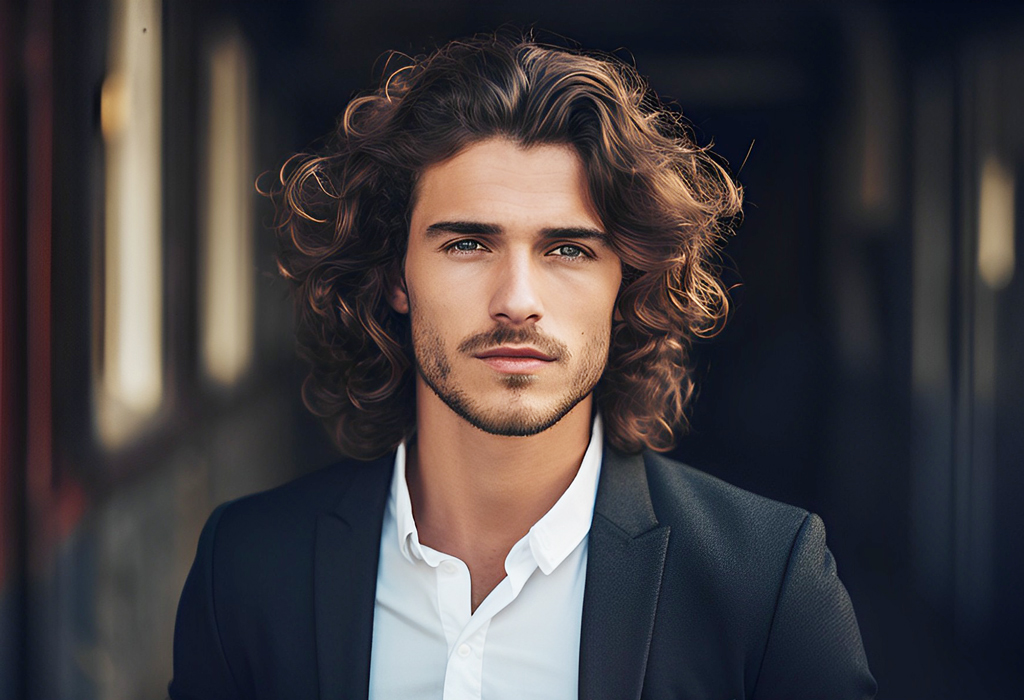
Opt for lighter conditioners and styling products instead. Look for mousses that include anti-humidity ingredients – if you want to bring out your waves, it’s best to look for ingredients marketed for curls.
If this is your hair type, unless you want frizz, avoid brushing your hair dry.
Instead, apply a leave-in conditioner while your hair is damp and detangle it with your fingertips or a wet comb.
You’ll also want to avoid blow-drying. Again, frizz! The exception to this is if you’re using a diffuser to style the curls.
Curly and coily hair have similar treatments when it comes to moisturizing. I’ll go into more detail on how to do that in type 4.
Type 4: Coily Hair
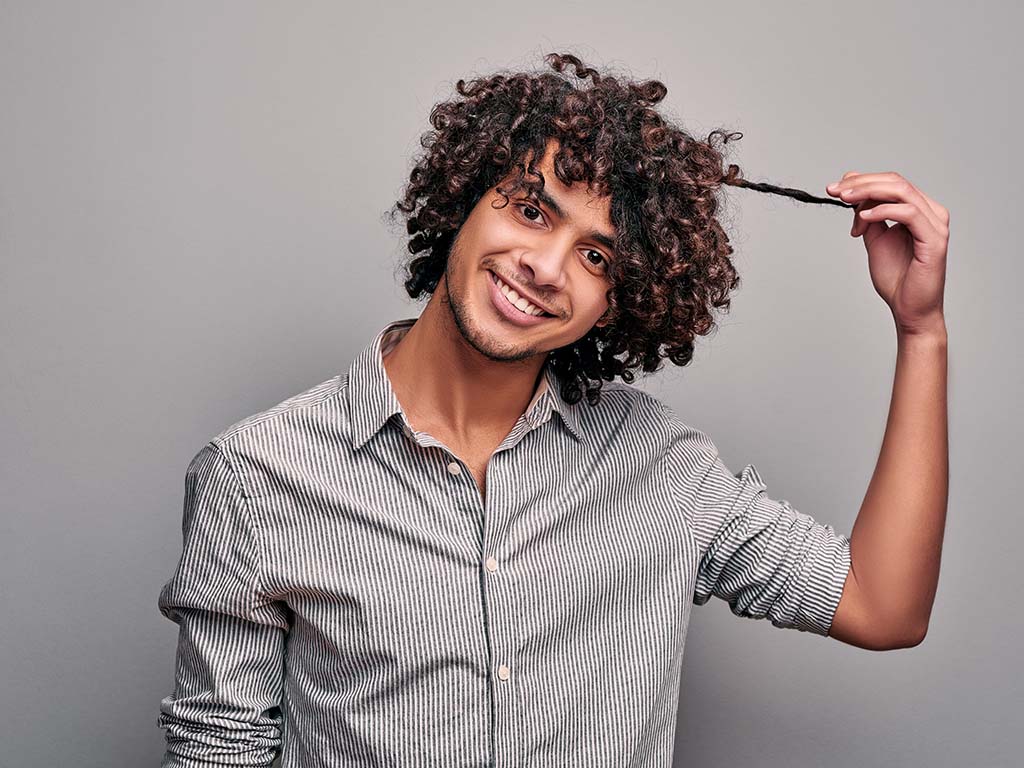
Similar to type 3 hair, Coily hair tends to need a lot of hydration and moisture. To keep your curls moisturized well, just remember: WHEO.
- Water
- Humectants
- Emollients
- Occlusives
These four types of ingredients will be the best thing you can do for your curls.
Water is the hydration that will ultimately keep your curls from frizzing up, but water can escape your cuticle and evaporate, so you need to seal it in. The other 3 types of ingredients keep the water LOCKED In.
Humectants are ingredients like glycerin and aloe vera. These ingredients pull water into your hair from the environment, which is amazing for fighting frizz and replacing any of the water that escapes.
Emollients soften and shine the hair, giving it that smooth conditioned feeling. Conditioners are full of emollients like Behentrimonium Chloride or Shea Butter.
Occlusives seal water inside your cuticles to prevent it from evaporating. Hair oils do a great job at coating and sealing in water. Not all hair oils are created equally, though. Some penetrate the cuticle, and some seal the cuticle. So you’ll need to find out what the best hair oil to use is.
Most curly hair conditioners formulate their products using WHEO ingredients. Be sure to find products that are specifically marketed for curly hair because they will also have ingredients to help your curls stay bouncy.
Another factor that plays a big part in how moisturized your hair stays is your porosity.
Hair Porosity Explained
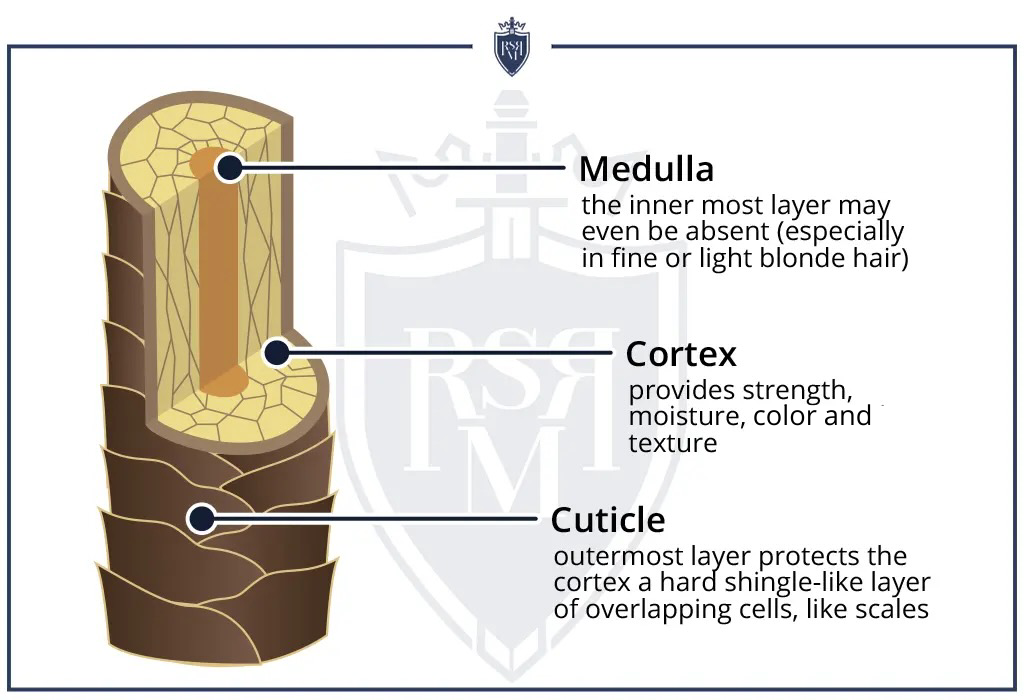
Porosity refers to the hair shaft’s ability to absorb and retain moisture. This is based on how tight or loose your cuticle scales are.
What is a cuticle?
Let’s look at the anatomy of one hair shaft.
A hair shaft has three layers.
The inner layer is the Medulla, the middle layer is the Cortex, and the outer layer is the Cuticle. For this section, the cuticle layer is most important.
Think of the cuticle layer like the overlapping scales on a fish. It’s the outermost layer that protects what is inside the cortex, like the cortex cell membrane, keratin proteins, and much more.
Having a healthy cuticle is vital to your hair retaining moisture and staying conditioned. To define how tightly or loosely your cuticles lay we use the term hair porosity.
We divide hair porosity into three categories: low, medium, and high.
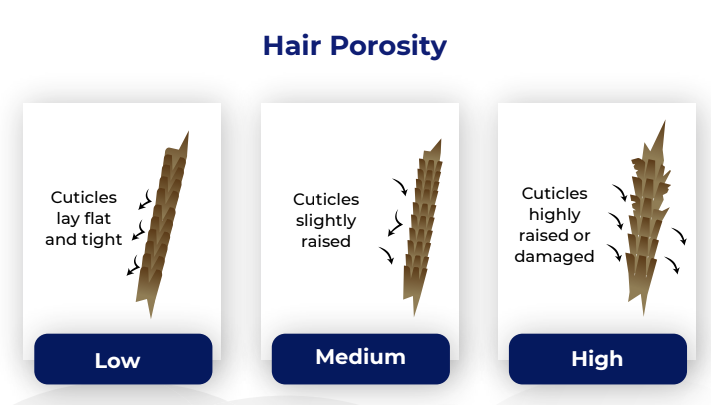
1. Low-Porosity Hair
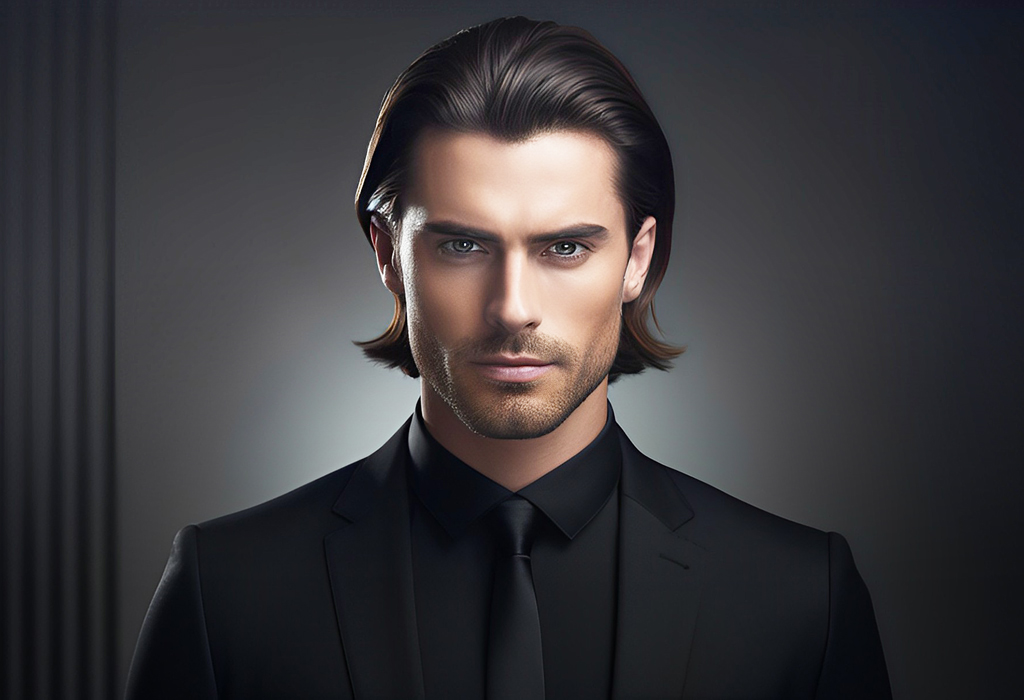
Characteristics:
- Cuticles lay flat and tight
- Water is hard to absorb
- Retains water really well once it’s in your hair
Signs You Have Low Porosity Hair:
- Products sit on the outside of your hair for a while
- Hair takes forever to get wet in the shower (water droplets sit on the outside of your hair)
- Hair air dries quicker because it doesn’t absorb too much water
- May be sensitive to products with protein
- Coconut oil or heavier oils make your hair stiff because they can’t penetrate
If this is your hair type, it means that your hair cuticle lies extremely tight and doesn’t let anything in.
It’s really hard for moisture to get under these scales and you will often see droplets of hair sitting on the outside of low porosity hair when it gets wet.
However, once moisture does get in, your hair holds onto it well because your cuticles are so tight. As a result, it will hold that moisture for a long time when you condition.
Downside? You’re prone to over-conditioning, which could cause your hair to get too stiff.
2. Medium-Porosity Hair

Characteristics:
- Cuticles slightly raised
- Easy to absorb & retain moisture
Signs:
- Your hair isn’t too dry or too oily 1-2 days after shampooing
- Water absorbs easily
- Your hair air-dries relatively quickly
- You hair absorbs product easily
For this hair type, the cuticle scales are slightly raised, allowing your hair to absorb and retain moisture easily.
3. High-Porosity Hair
Characteristics:
- Cuticles are highly raised and might be damaged
- Water absorbs instantly
- Water escapes easily
Signs:
- Hair absorbs water and product instantly
- It air dries slower because it absorbs water easier (wide open cuticle), but when it dries it stays dry
- Hair always feels frizzy or dry
- It has had coloring or chemical treatments in the past
This hair has raised or broken cuticles, possibly due to damage or color treatment but it can also be genetic. Moisture is easy to absorb and really hard to retain.
High-porosity hair gets saturated with products very easily but it also dries really fast. It’s often frizzy or dry, may look damaged, and it’s more prone to breakage.
I found a study from the Journal of Cosmetic Science showing that high-porosity hair is directly linked to UV damage and chemical treatments.
If you don’t regularly straighten or bleach your hair and your blow dryer isn’t always set to “fire hazard”, chances are your hair is medium porosity.
This is a good thing.
How To Discover Your Hair Porosity
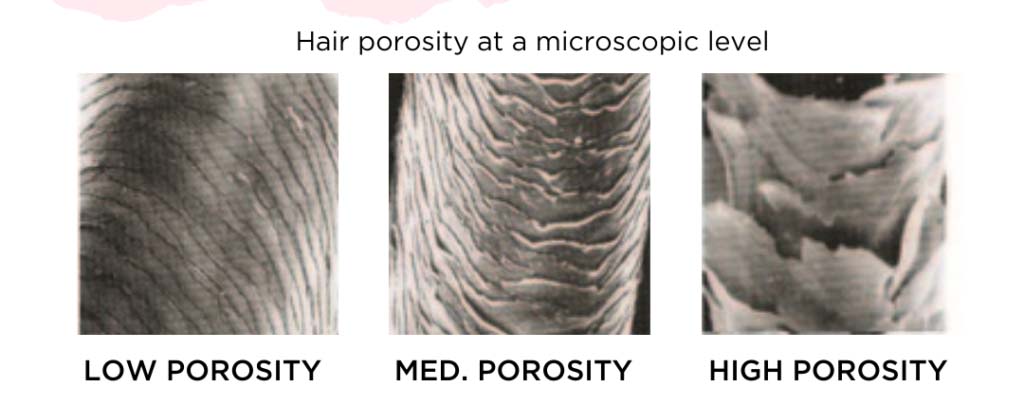
Determining hair porosity can be tricky because it’s not always the same day-to-day. Sometimes your porosity can change with the condition of your hair, and other times it’s genetic. For this reason, it can be difficult to pinpoint.
Having said that, low porosity hair seems to be the one that doesn’t change often. If you have low porosity hair, you can spot it. Your hair will always look shiny because all your cuticles lay tight and flat.
If your cuticles feel rough to the touch, that means they are raised, and if your hair looks dull and dry all the time, then chances are you have high porosity.
Your best bet to determine your hair porosity is to ask your stylist the next time you get a cut. They’re trained in cosmetic science and know what high, medium, and low porosity “feels” like when sliding their fingers along your cuticle scales.
They also have a trained eye to know what it looks like. Chances are, they can tell you more accurately than you can diagnose yourself.
But here’s a quick method that you can do at home to test your own porosity. Next time you shower and wet your hair – ask yourself these questions:
- How quickly does my hair absorb water?
- Does it air dry quickly?
- How does it look most of the time? Is it dry & frizzy looking 90% of the time? (High porosity)
- Is it flat & shiny looking most of the time? (Low porosity)
- Is it somewhere in between? (Medium porosity)
Important note: Different parts of your hair can have different porosities. For men with longer hair or color-treated hair, the ends tend to be more porous than the roots. This is because porosity is a combination of the day-to-day condition of your hair and genetics.
Your ends have been exposed the longest to the weather, pollution, the environment, and the sun. Your roots are “newer,” so they will typically be your “true” porosity.
Hair Care Tips Based On Hair Porosity
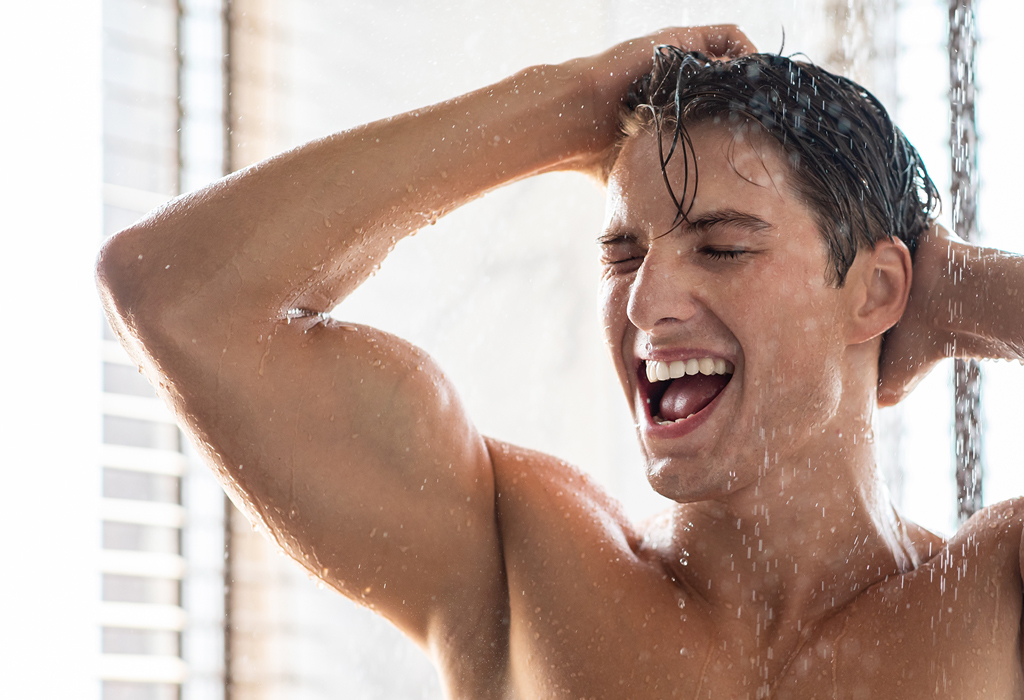
If your hair is low-porosity…
Wash with warm water to raise the cuticle scales a bit, allowing them to absorb more moisture. Apply oils or leave-in conditioners when your hair is damp to help penetration.
When hair is wet, cuticle scales are raised more than when they’re dry.
After applying the product, wear a shower cap. The heat from the shower cap will help raise the cuticles so the product can be absorbed. Once your hair dries, it will retain that moisture really well.
Additionally, use protein-free shampoos and conditioners. Since your hair holds onto keratin really well, adding more protein could cause it to get stiff or brittle. Keep in mind that most low-porosity hair tends to be protein-sensitive.
Water-based conditioners and leave-ins are a better choice since they’ll prevent oil build-up.
If your hair is high-porosity…
The goal is to seal and heal the cuticles. Use shampoos and conditioners with oils, shea butter, and proteins.
Using leave-in conditioners often and applying coconut oil daily can help lock in that protein and seal those cuticles.
Washing your hair with cold water can help close those cuticles – if you’re blow-drying your hair, use a heat protectant.
If your hair is medium porosity…
Congratulations! Keep doing what you’re doing.
Hair Texture Explained
The next thing to consider is hair texture or the thickness of one individual strand, and it’s measured as fine, medium, or coarse.
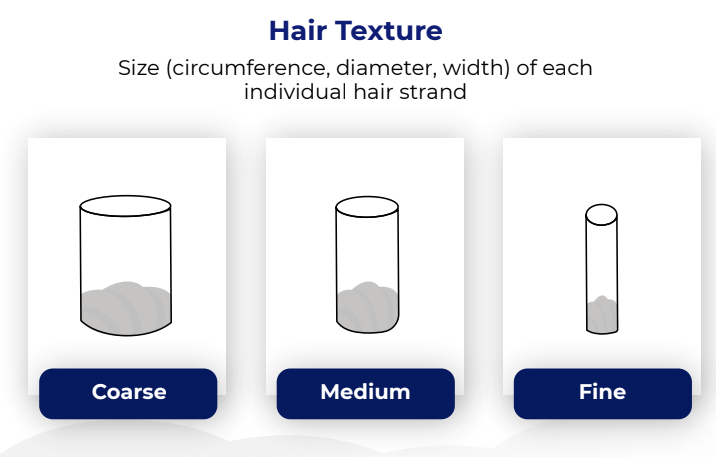
How To Discover Your Hair Texture
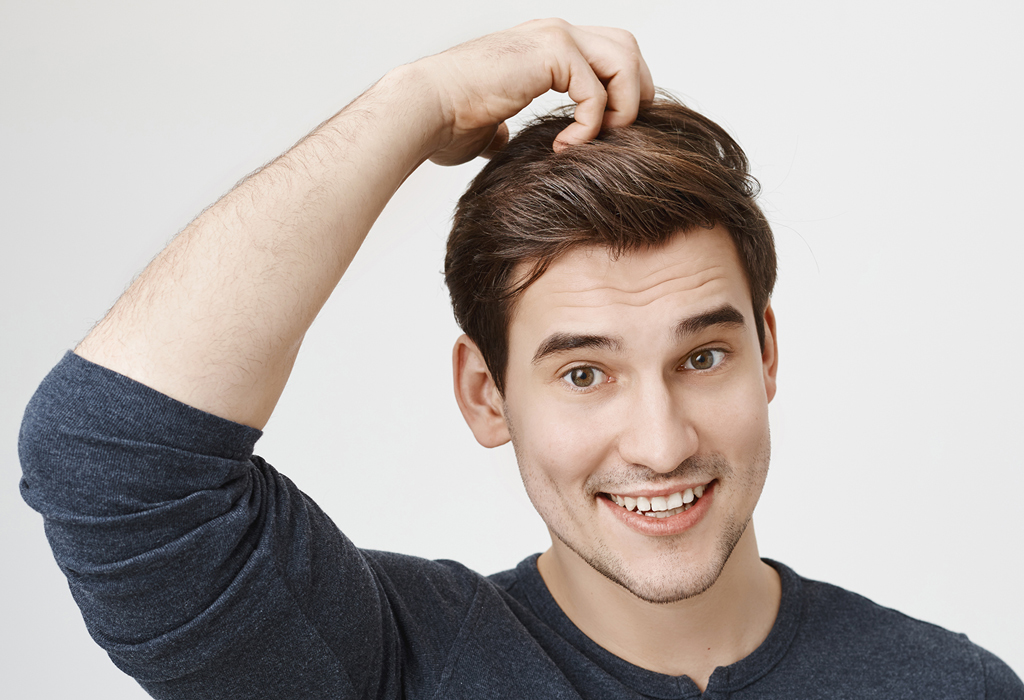
To test this, take one strand of dry hair and roll it between your fingers.
If you can’t track the strand of hair in your fingers, you have fine hair.
If you can feel something, but it’s hard to track perfectly, you have medium hair.
If you can easily track the strand of hair, almost like a thin wire, then you have coarse hair.
Hair Care Tips Based On Texture
1. Fine Hair
If you’re like me and you have fine hair, the most important thing to remember is that your hair is easier to break. This means you need to treat it very gently.
Scrubbing or brushing too hard, using too much heat, or towel drying too roughly will all damage fine hair. Be gentle when doing all these things.
Gently massage your scalp when you shampoo.
If you have to use a blowdryer, use its low-heat setting.
Since fine hair holds little protein, products with protein in them can be helpful.
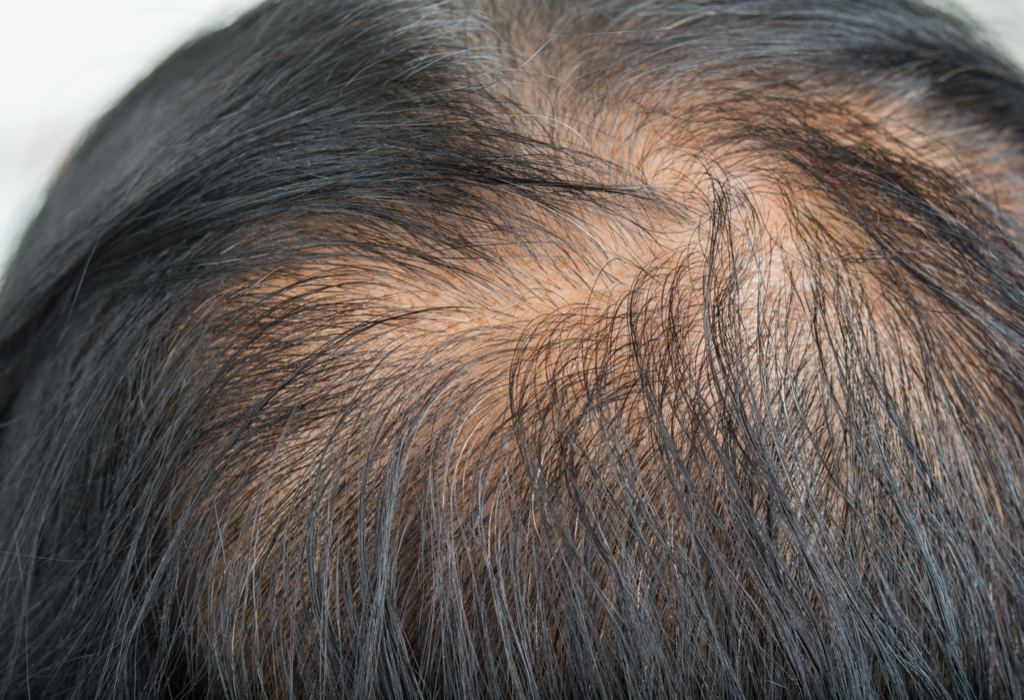
On the other hand, guys with fine hair need to be careful not to over-condition since this can lead to flattened hair or Hygral-fatigue over time. Also, when you use leave-in products or oils, remember that a little goes a LONG way.
The best shampoo and conditioner for people with fine hair is volumizing products. Lightweight formulations that don’t weigh your hair down.
My personal favorite is the Odele Volumizing Set. It’s the shampoo & conditioner I personally use.
2. Medium Hair
If you have medium texture hair, you’re kind of right in the sweet spot when it comes to hair care.
Lucky you!
This means you have a ton of flexibility when it comes to products and you can worry more about porosity (see above) when choosing your shampoo and styling products.
3. Coarse Hair
Again, this hair texture has a thicker feel between the fingers since it’s so dense.
This hair texture means your hair is much stronger, holds more protein, and is far more resistant to heat and chemicals.
The downside?
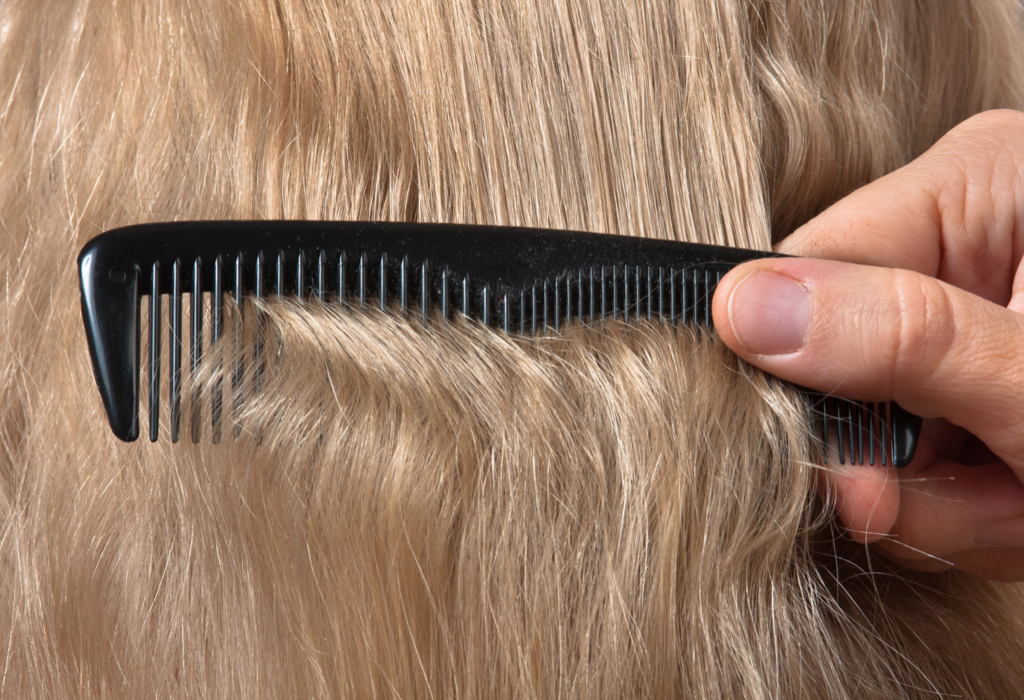
It can be stiff, especially when dry, and it can frizz really easily, especially if it’s curly.
Coarse hair also contains the most amount of keratin protein since it’s the thickest type: to prevent protein sensitivity, you’ll want to avoid high protein shampoos and other products.
Again, this stuff gets really complex with all these variables and it really comes down to individual trial and error.
Hair density refers to how thick or thin your hair is overall or how thoroughly it covers your scalp. When people say that someone has thin or thick hair, they usually refer to density, not texture.
As we mentioned above, the texture is the width of the individual strand.
Density, on the other hand, is how many hairs are on your scalp per square inch or how close the follicles are to each other.
Once again, we divide hair density into thin, medium, or thick hair.
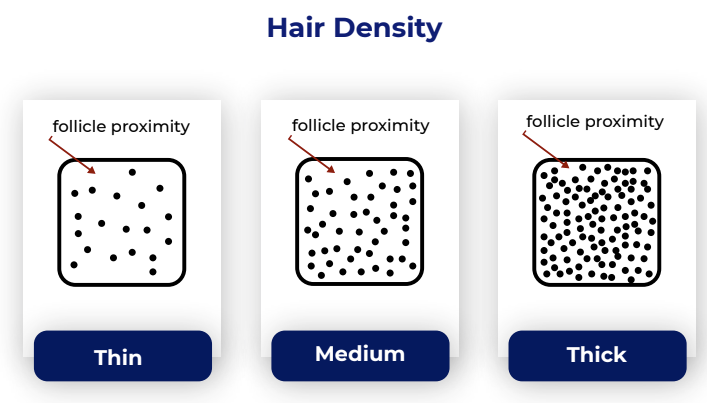
How To Discover Your Hair Density
To perform a density test, gently pull a little bit of your hair to the side and see how much of your scalp is visible. If there’s a lot visible, you have thin hair; if there’s a little bit of scalp visible, you have medium hair; and if you can’t see your scalp at all, then your hair is very thick.
When looking at hair density – there’s not much to say about maintenance.
If you have thin hair, avoid heavy creams or oils. It will weigh down the little amount of hair you have. Lightweight powders or sprays are the best for styling this hair.
If you have medium or thick hair, you can get away with both light and heavy products.
Alright – we’re in the home stretch now. Let’s move on to scalp moisture.
Scalp moisture is how dry or oily your scalp is based on how much sebum your scalp naturally produces.
When it comes to scalp moisture, there are four subcategories: balanced, dry, oily, or combination (oily roots and dry ends.)
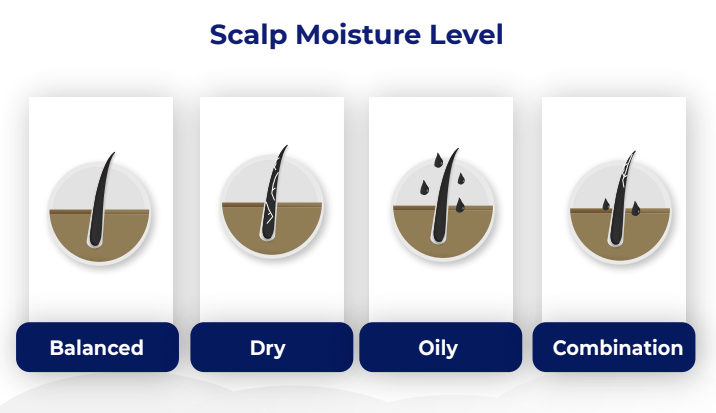
How To Discover Your Scalp Moisture Levels
If you’re not sure how oily your scalp is, ask yourself these questions:
- Is my face dry, oily, or balanced? – This is a good indicator of sebum production in the scalp too.
- How quickly does my scalp get oily after I shampoo and condition?
- Does my scalp get oily even though my ends stay dry?
Characteristics:
- Balanced: your scalp & hair get oily 2-3 days after washing with no flaking or dandruff.
- Dry Scalp: Your scalp dries up quickly after washing, e.g. within 24 hours, and/or you experience irritation, flaking, or itchiness immediately.
- Oily Scalp: your scalp gets oily within a day of washing and it’s always flat and difficult to manage. You may or may not have dandruff.
- Combination: your scalp gets oily quickly but your ends stay dry, even after a few days without washing.
One important note before continuing.
There is a BIG difference between dry scalp and dandruff.
Dandruff is mainly caused by a skin condition called Seborrheic Dermatitis. It’s a fungus that needs an antimicrobial solution.
Dry scalp, on the other hand, is just flaking from your skin being dry. Dandruff is usually found on oily scalps, whereas dry scalp symptoms are found (surpise) on dry scalps.
Here’s a chart showing the differences:
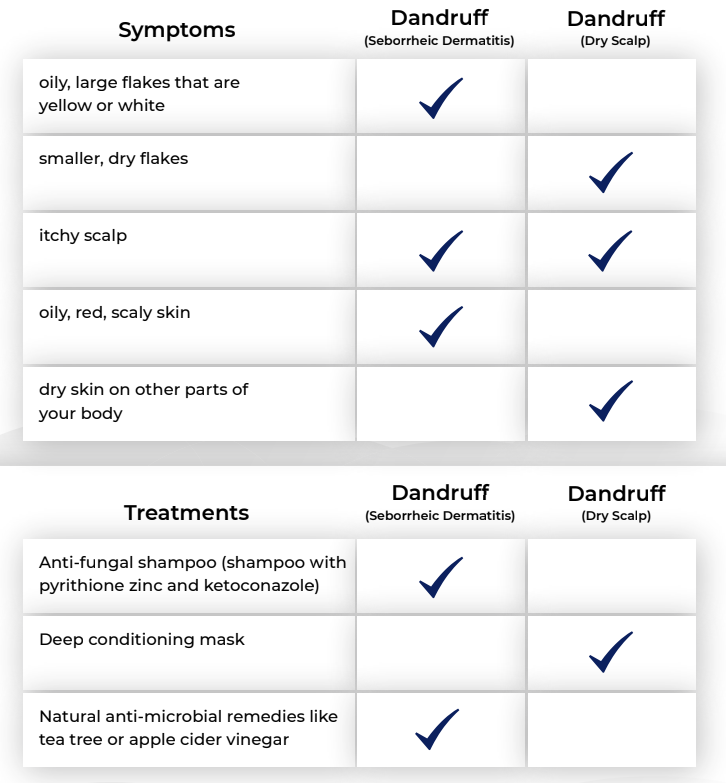
Why is this important? Many men will see dandruff (from a dry scalp) and go out and buy medicated shampoo. That’s the wrong solution. It would be best if you had a gentler shampoo. More on that below.
Now that we’ve got that cleared up…
Hair Care Tips Based On Scalp Moisture
For Dry Scalp
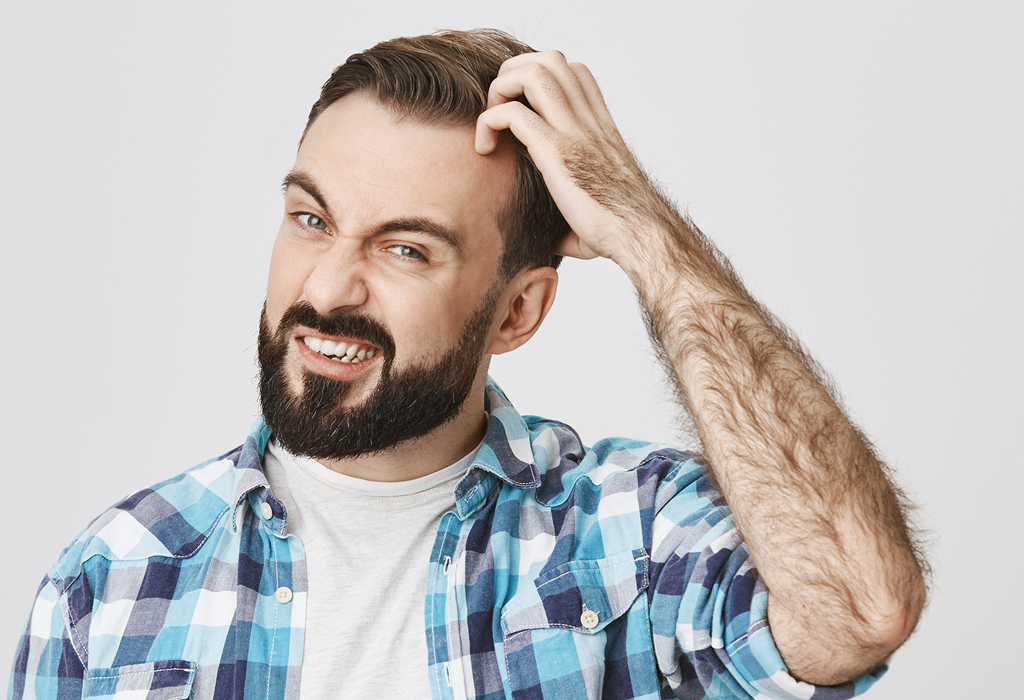
Wash your hair less often (twice a week, perhaps) to allow more time for sebum production between washes.
After you wash and condition, try a deep conditioning mask or protein treatment. Coconut oil masks can work wonders for this.
Using argan oil in your hair daily can also offer your hair and scalp hydration.
Finally, use a gentler shampoo and moisturizing conditioner. When shopping for shampoo, look at the ingredients on the back and make sure it doesn’t have any of these on the first line:
- Sodium Lauryl Sulfate
- Sodium Laureth Sulfate
- Ammonium Lauryl Sulfate
- Sodium C14-16 Olefin Sulfonate
These detergents are powerful and while they can be a great tool for fighting a greasy scalp, they could make a dry scalp worse.
To reiterate the point above, one BIG mistake men make is seeing flakes and automatically assuming Dandruff. If you look at the previous chart, you know Dandruff is a fungal problem, not a dry scalp problem.
But most men mistake the two, so they go out and buy anti-dandruff shampoo. These shampoos contain the harsh detergents listed above and active ingredients your scalp doesn’t need.
So when men think they are solving their flakes problem, they’re actually exacerbating it – harsh shampoo is what caused their dry scalp in the first place.
Case in point here:
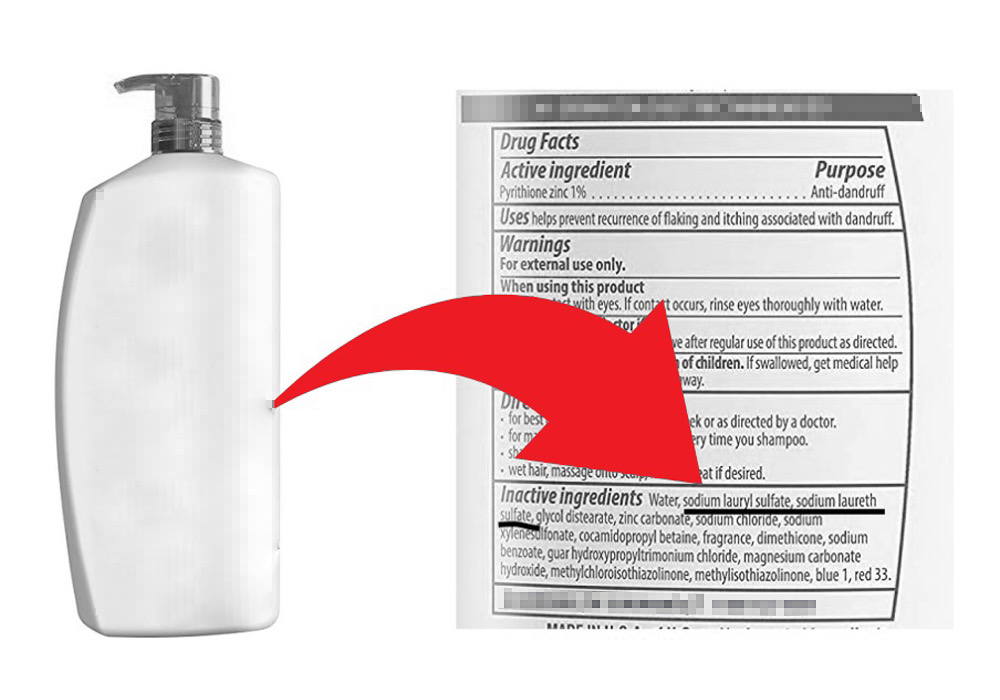
The solution is to shop for gentler shampoos.
Here are some detergents to look for that are gentler:
- Sodium Lauroyl Methyl Isethionate
- Cocamidopropyl Betaine
- Sodium Cocoyl (or lauryl/lauroyl) Sarcosinate
A great brand that uses gentle shampoo is Beardbrand. I highly recommend men with dry scalp try their shampoo. It’s a great formula.
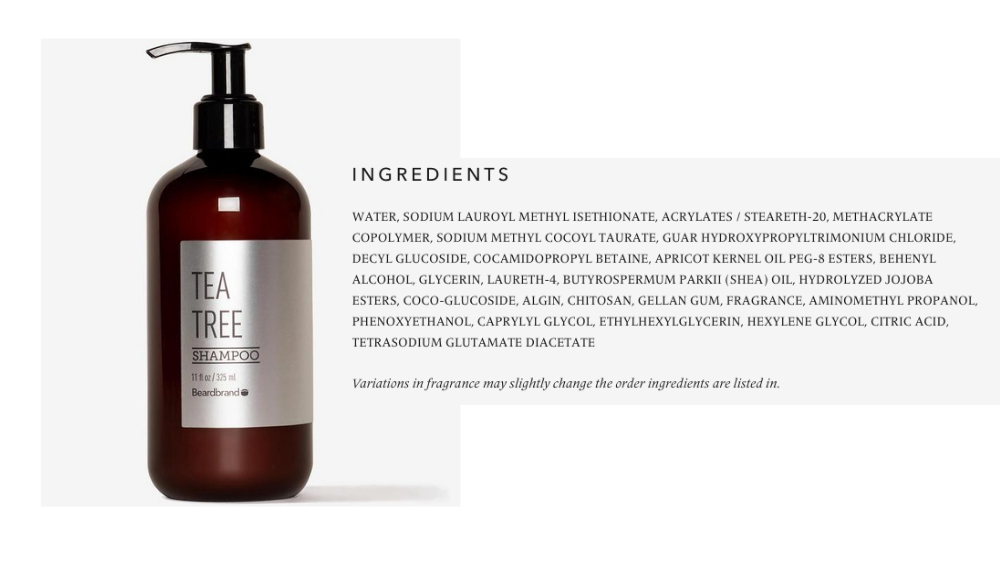
For Oily Scalp
For men who have greasy scalps within 24-48 hours of shampooing, there could be a few problems at play. The solution to overactive sebaceous glands could be one or both of the following:
- You may need a stronger shampoo
- You may need to increase your shampoo frequency
For my greasy-haired gentlemen, using a sulfate shampoo or a shampoo marketed as clarifying could be beneficial.
In your case, you will want to look for the ingredients that people with dry scalp try to avoid because you need the extra chemistry elbow grease (pun intended) to fight that sebum build-up.
The recommendation I have for people with a greasy scalp is the Bumble & Bumble clarifying shampoo. Their formulations are salon-quality, meaning they’re more meticulous about percentages and ingredients than a mass-market brand is. Their Sunday Shampoo is specifically formulated to fight a greasy scalp.

For Combination Scalp
Chances are, if you have short hair, you don’t have a combination scalp because your hair isn’t long enough to have dry-ends. Men with long hair are the main ones that suffer from this.
For men with long hair, oily roots, and dry-ends – use a similar shampoo as men with an oily scalp because the roots are the issue.
However, make sure you shampoo and condition your hair correctly. For combination hair, it’s important you only scrub your scalp when you shampoo. As you rinse your hair, the shampoo will pick up any remaining dirt on the way down.
When you condition you will only condition from midpoint to ends – let the conditioner sit for 3-5 minutes, then rinse it out.
For Balanced Scalp
If this is you, congratulations, keep doing what you’re doing!
Is Hair Type REALLY THIS Important?
If you’ve ever considered growing your hair out past your ears, yes it is this important to know.
Most men with short hair visit the barbers so often they don’t have time to damage their hair before chopping it off again, so they never see the results of poor hair care.
However – their scalp may feel it, so understanding SOME of this is important for every single guy. Even those without any hair at all!
I hope I’ve helped you and given you some direction on how to care for YOUR hair.
Want more hair care tips? Subscribe to my YouTube channel.
Click below to watch the video – ULTIMATE GUIDE To Men’s Hair Types
[ad_2]
Source link

Hi! I’m a dedicated health blogger sharing valuable insights, natural remedies, and the latest scientific breakthroughs to help readers lead healthier lives. With a holistic approach to wellness, I empower individuals with accessible and actionable content, debunking myths and offering practical tips for incorporating healthy habits.